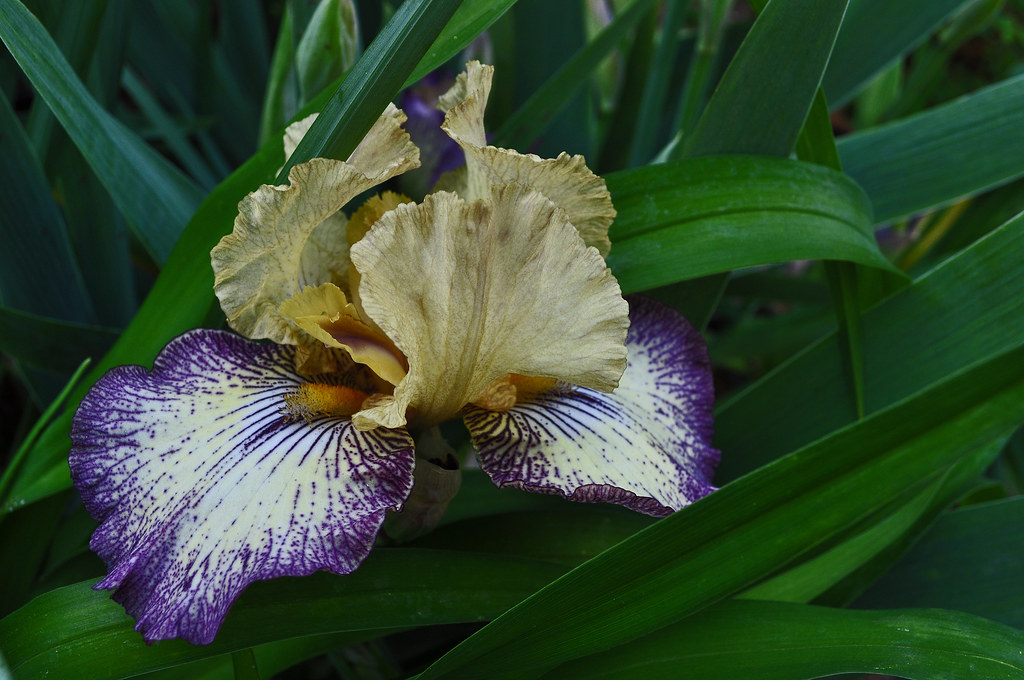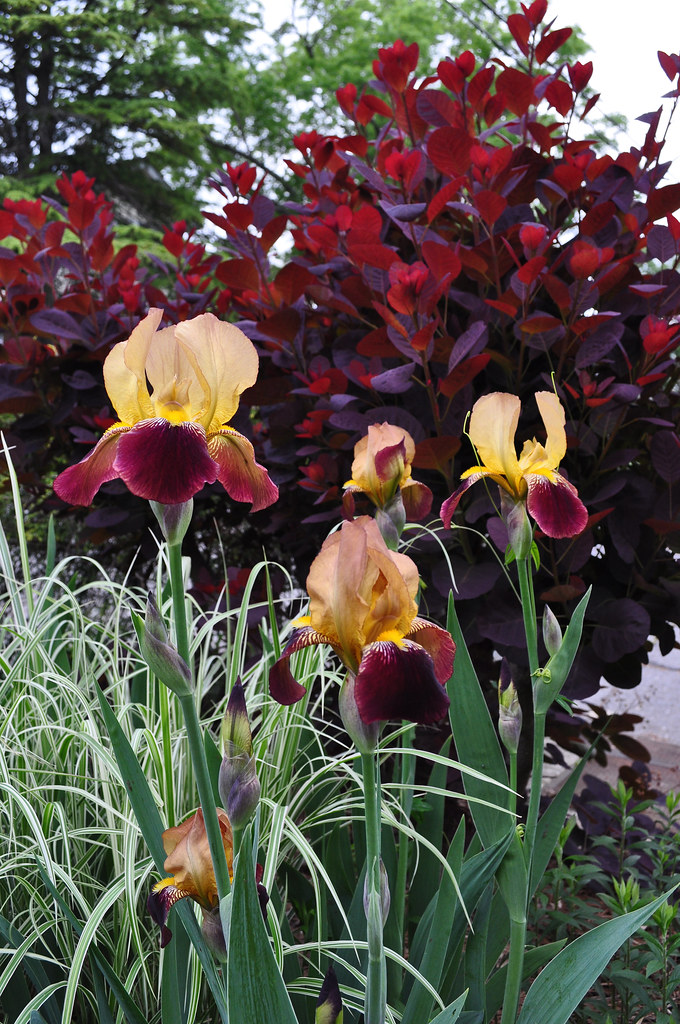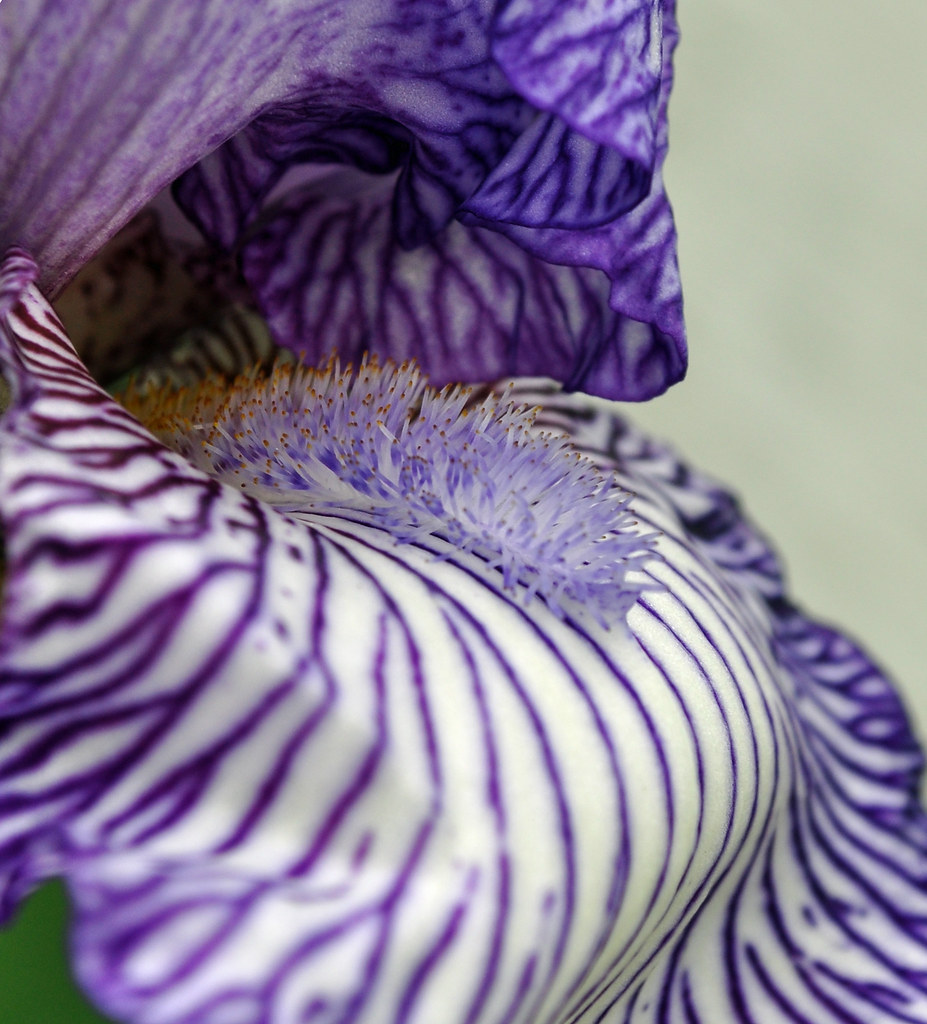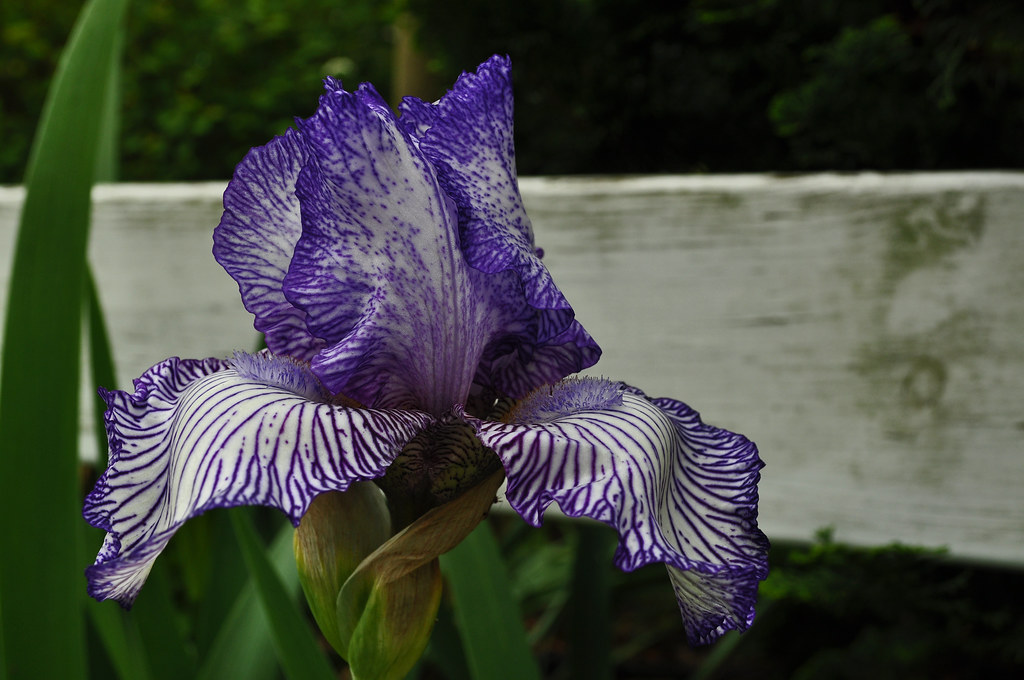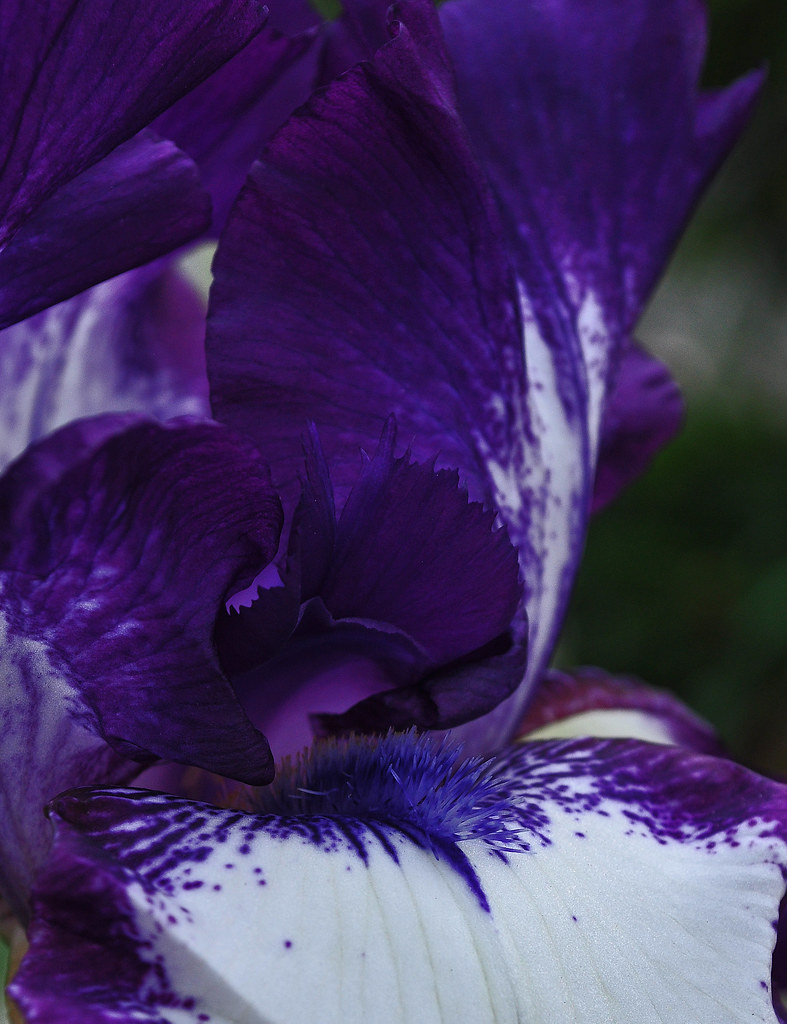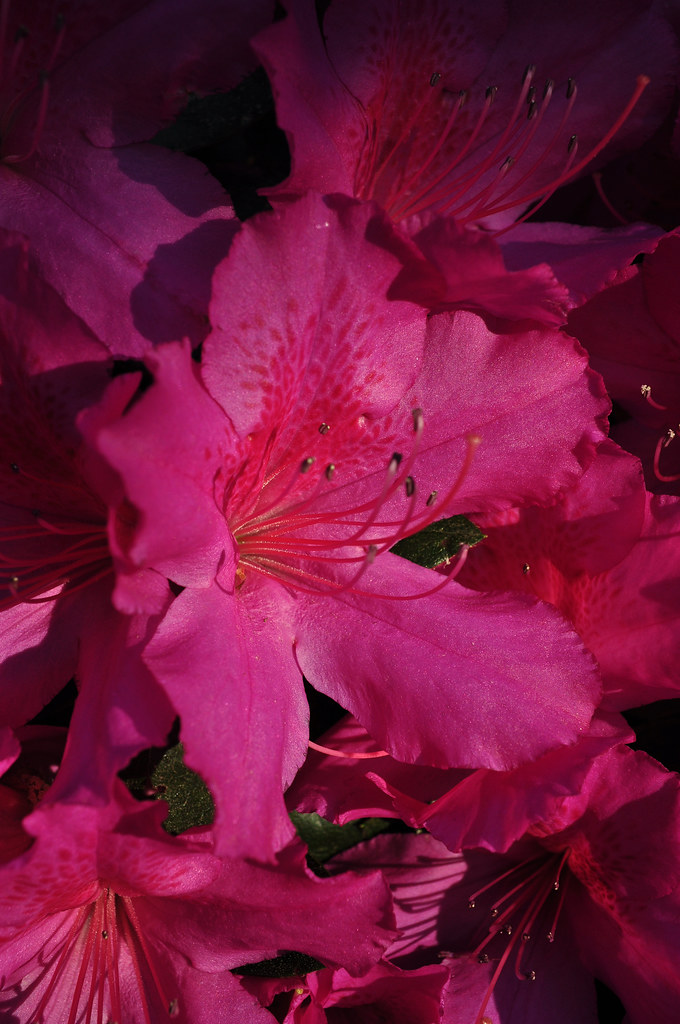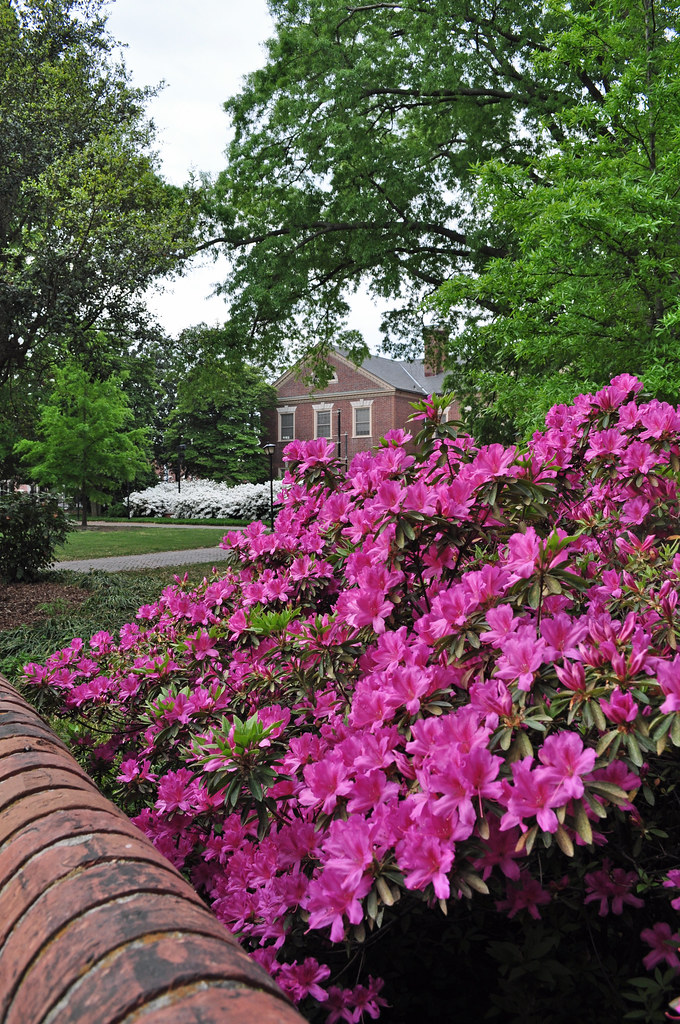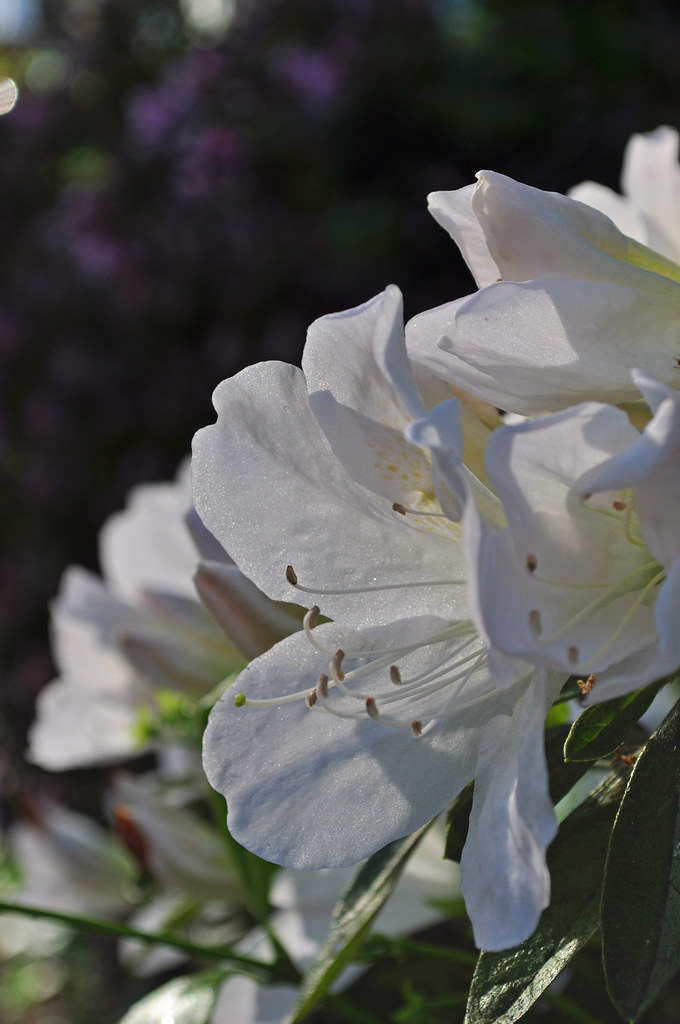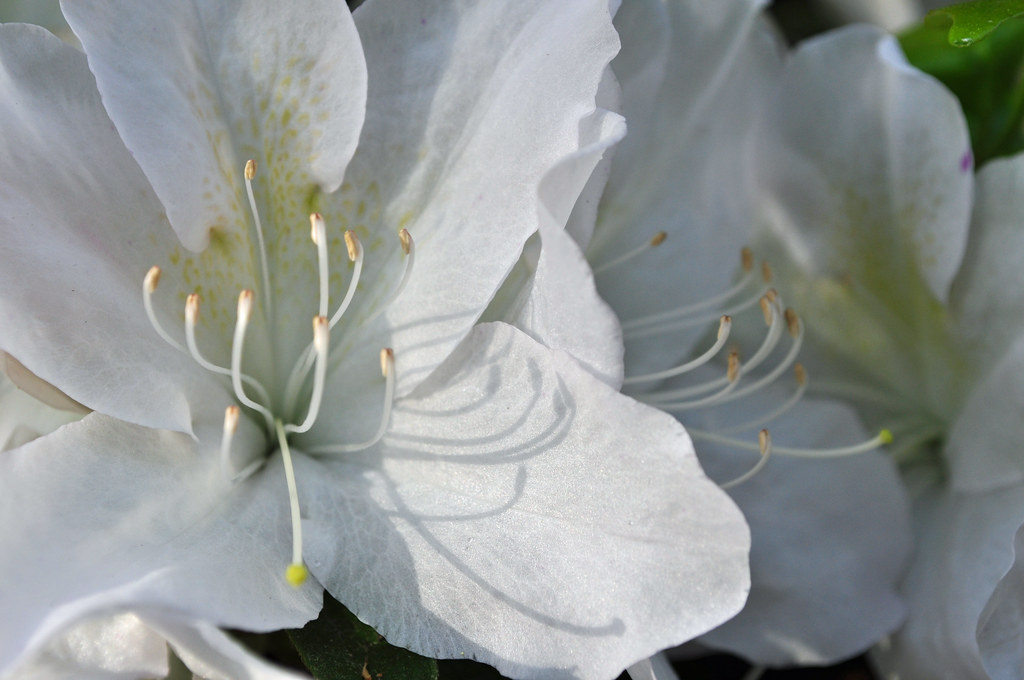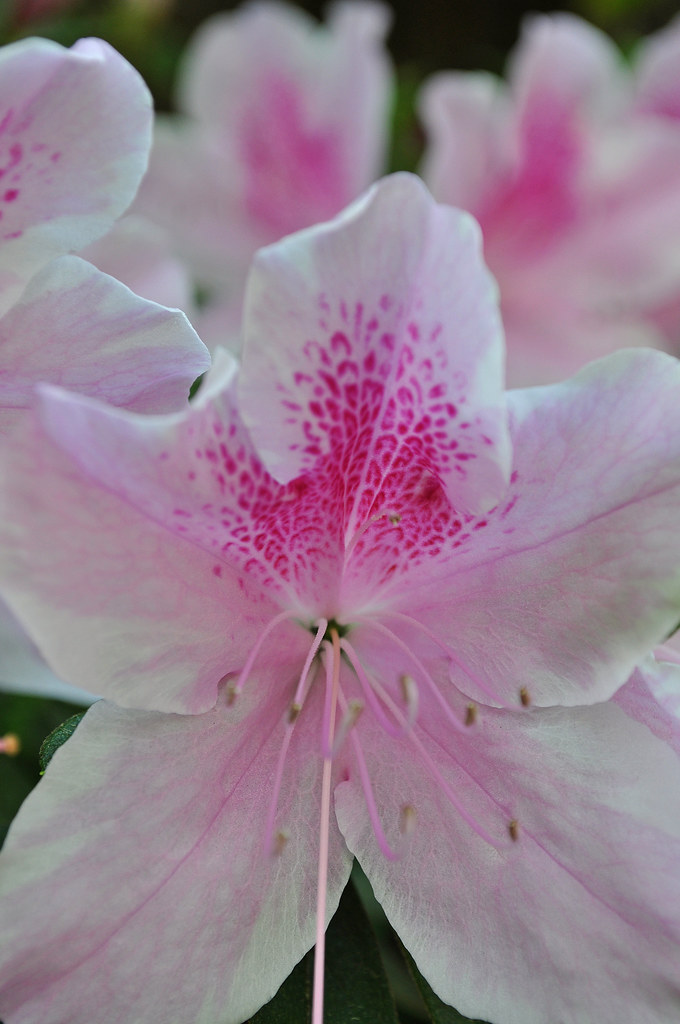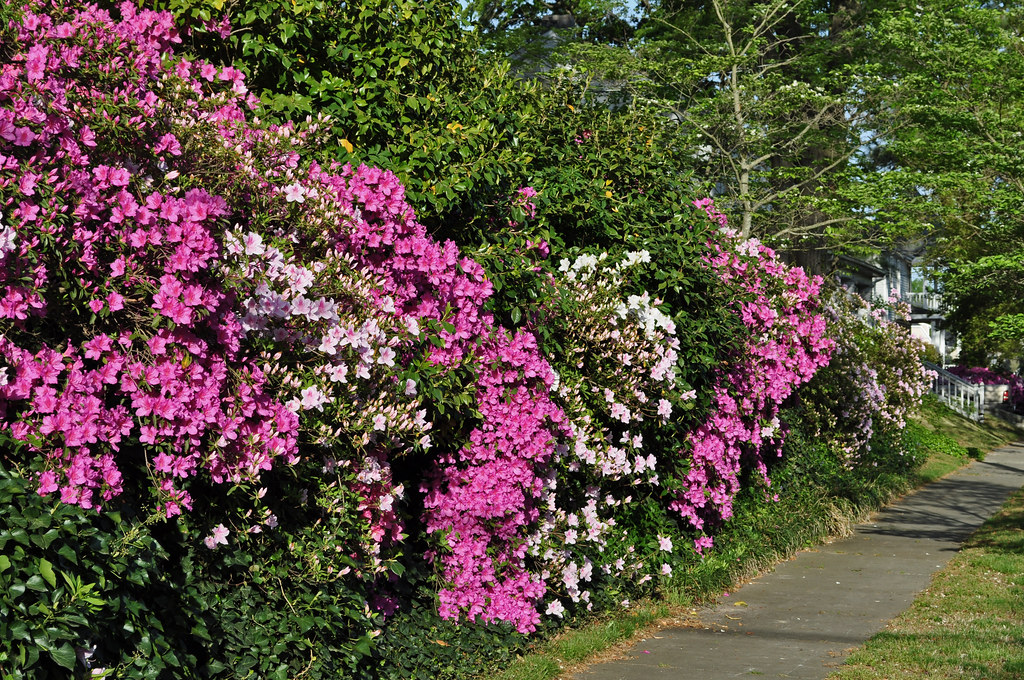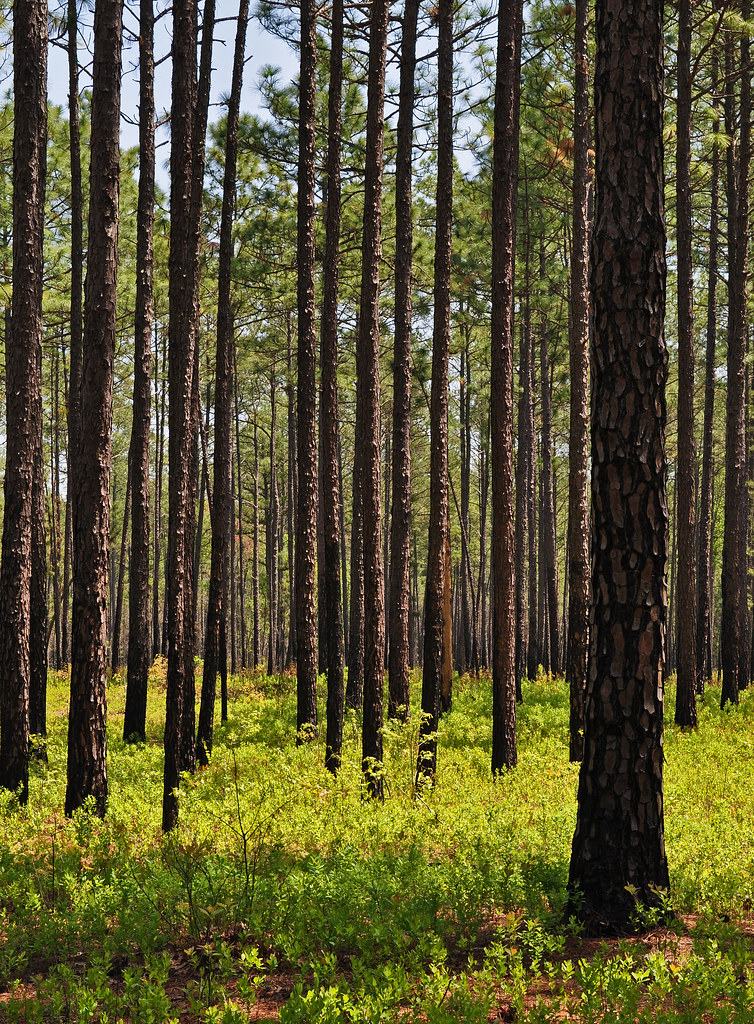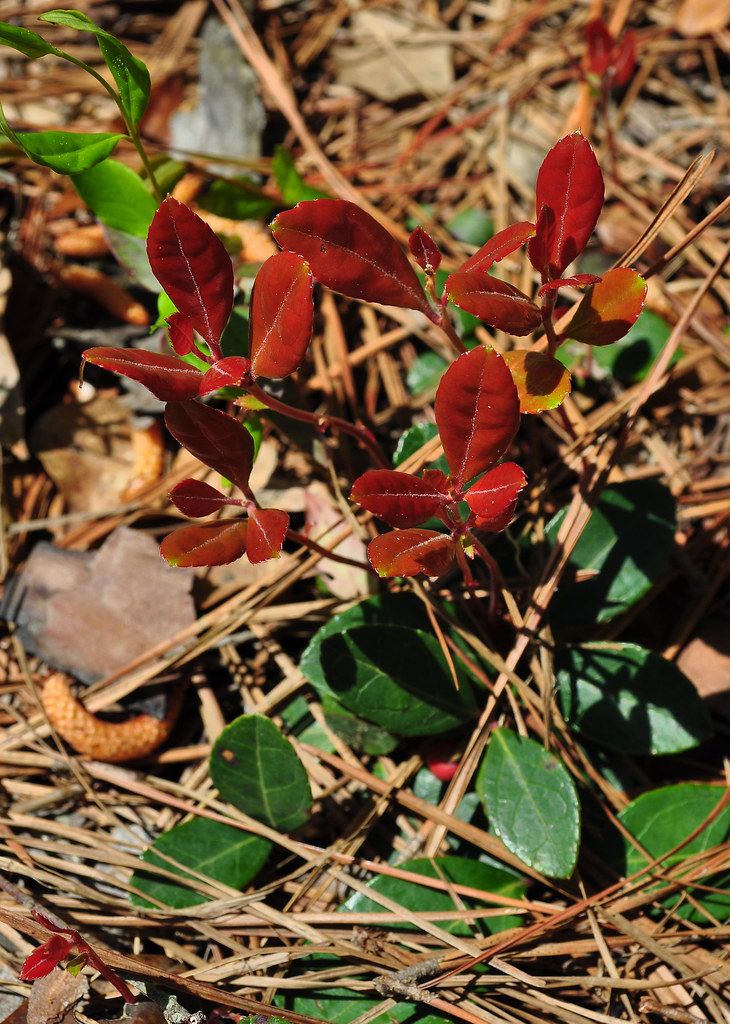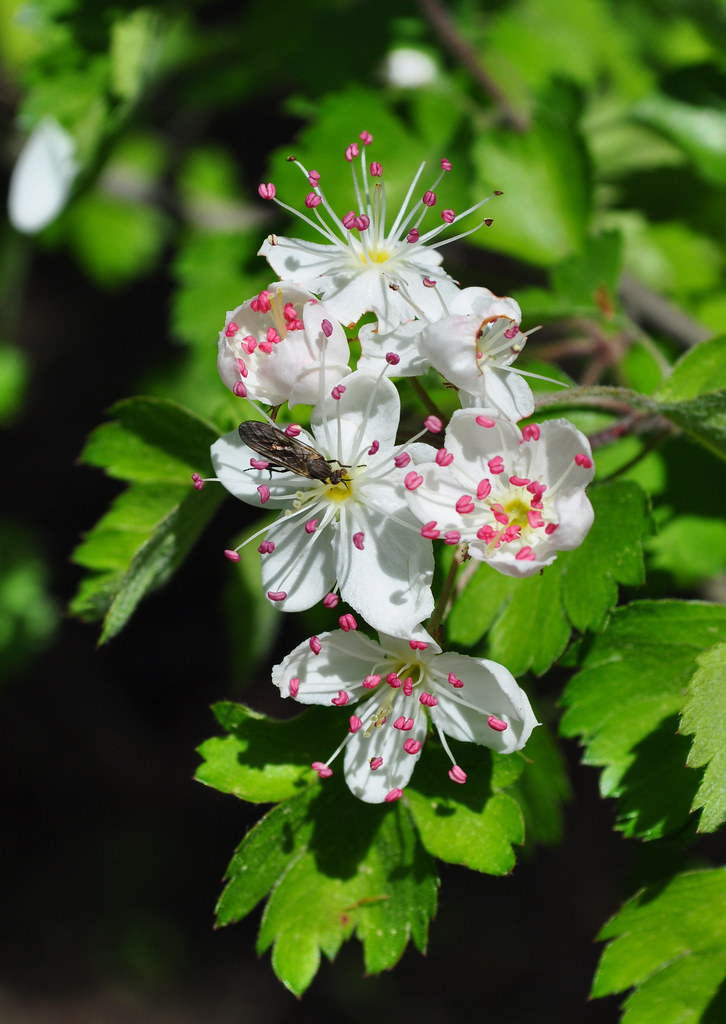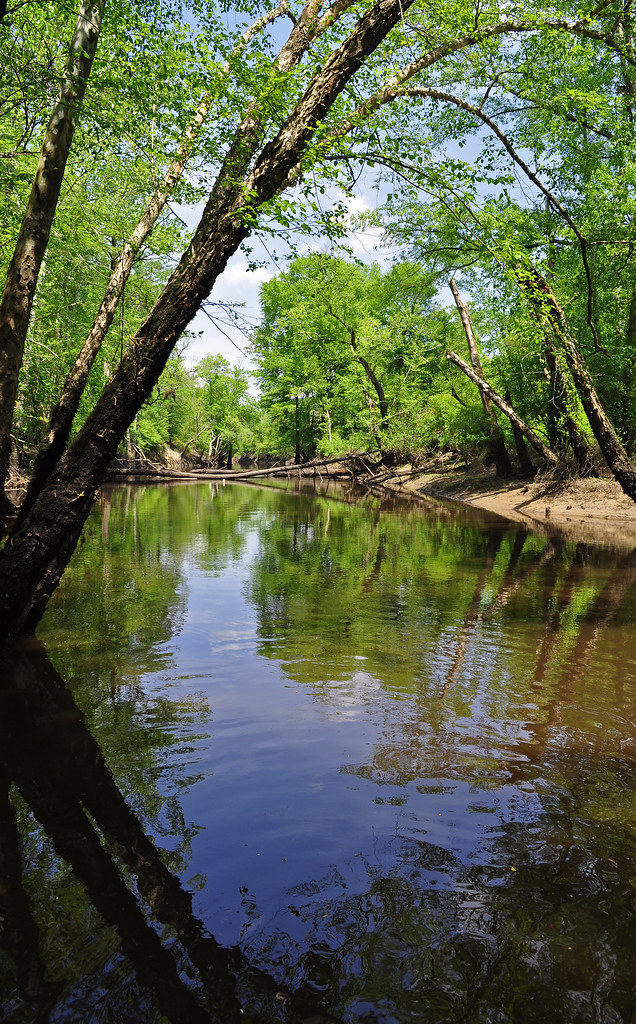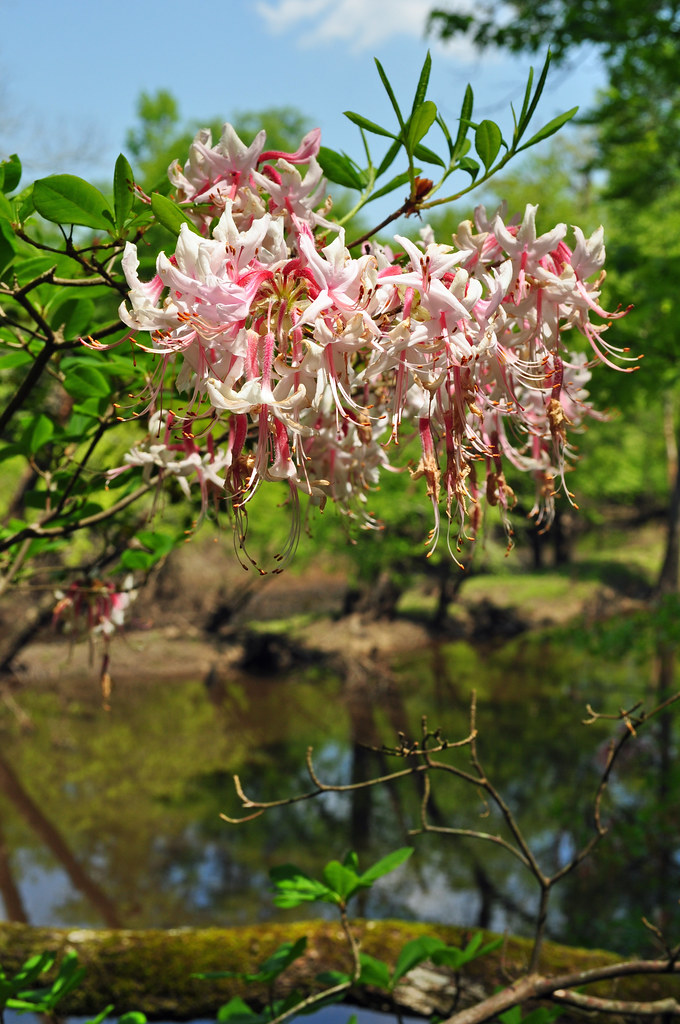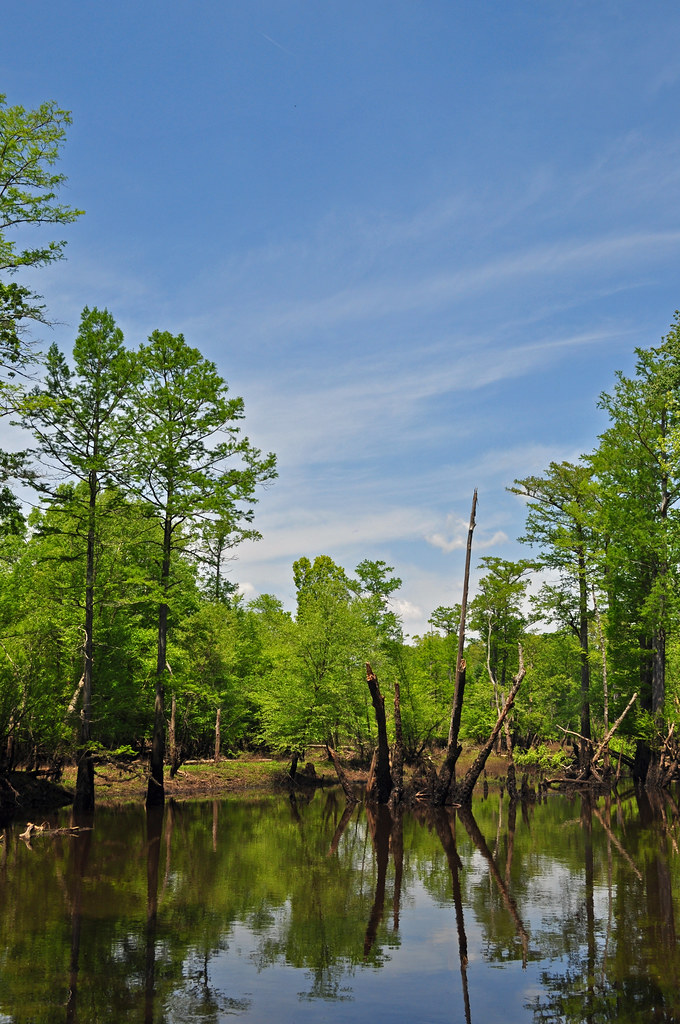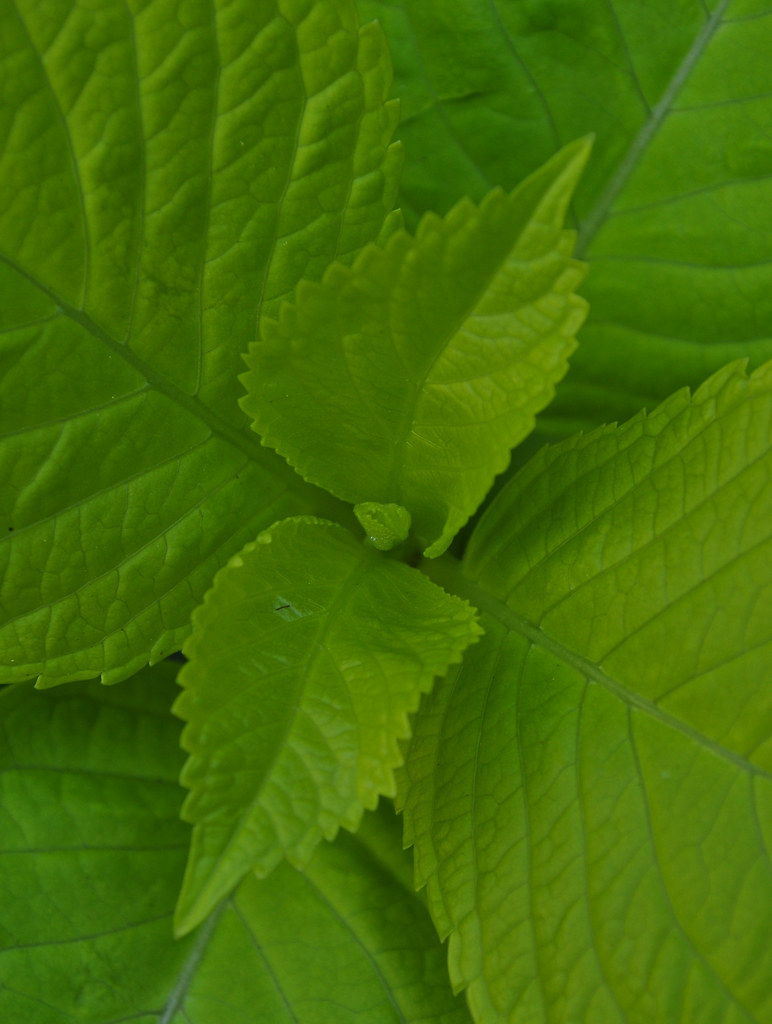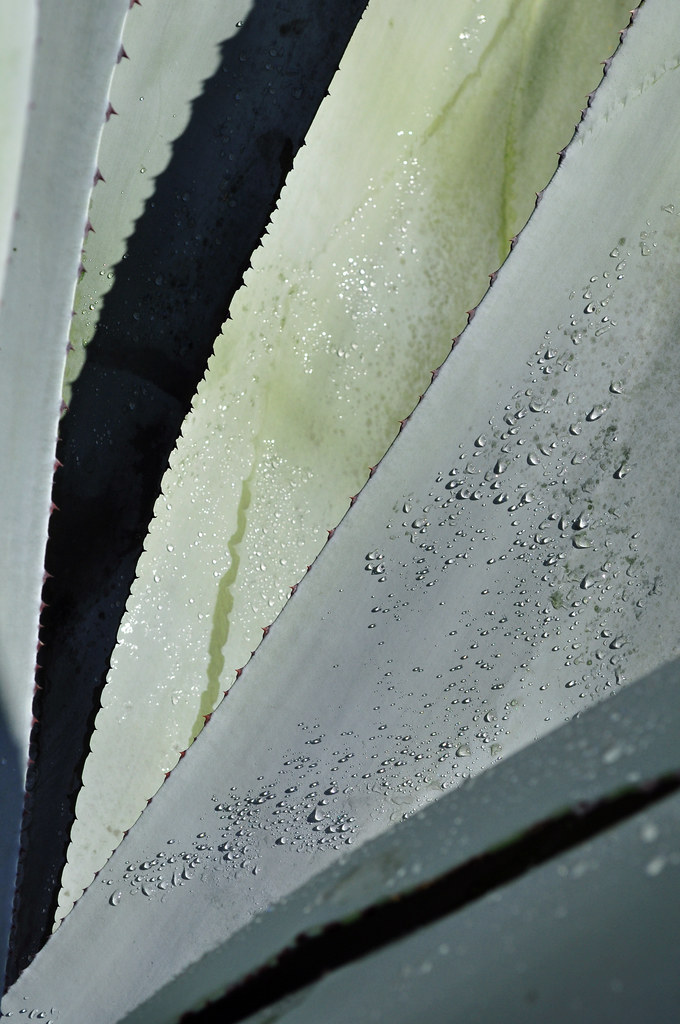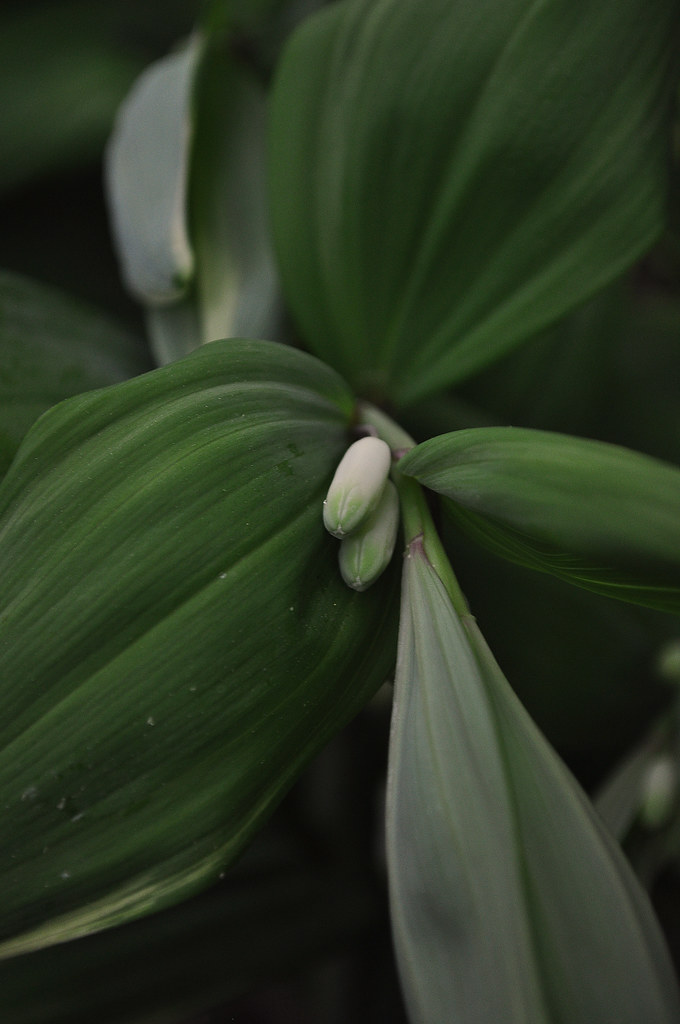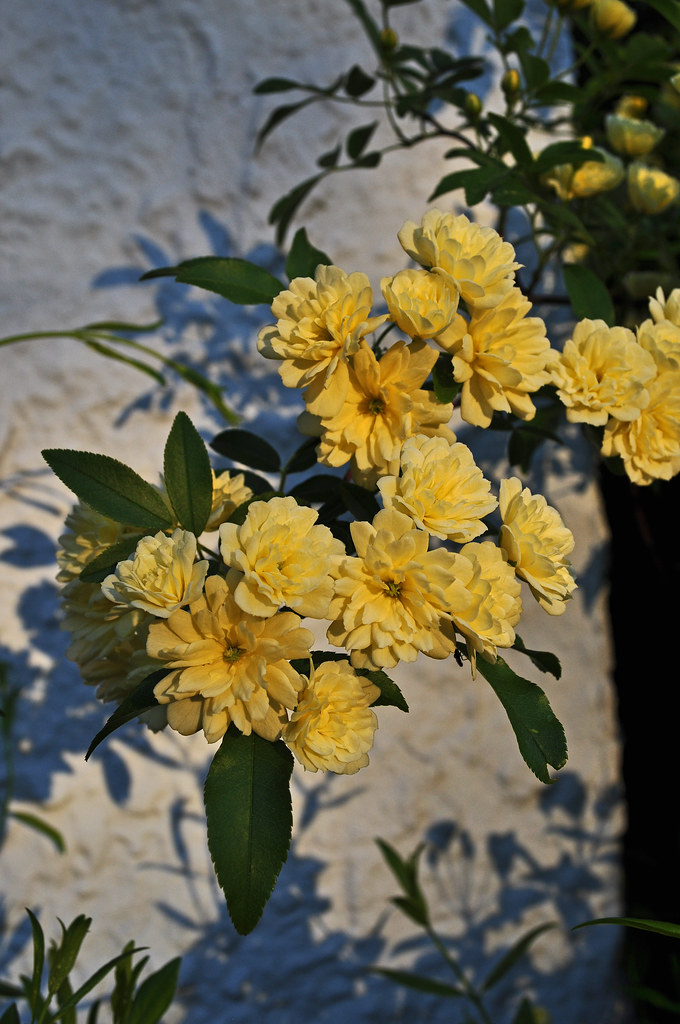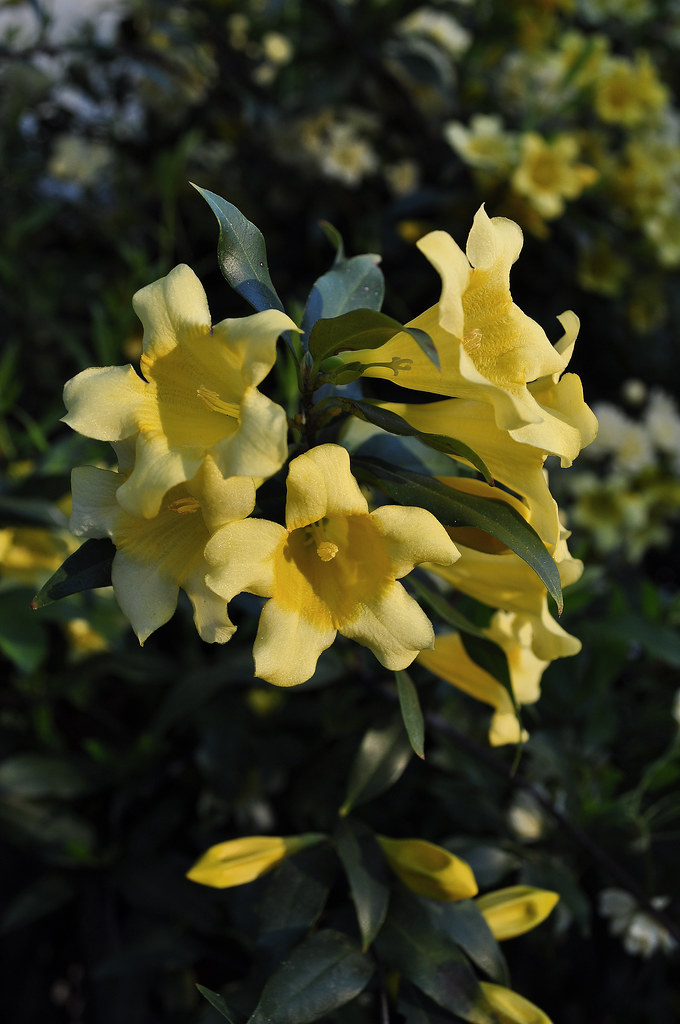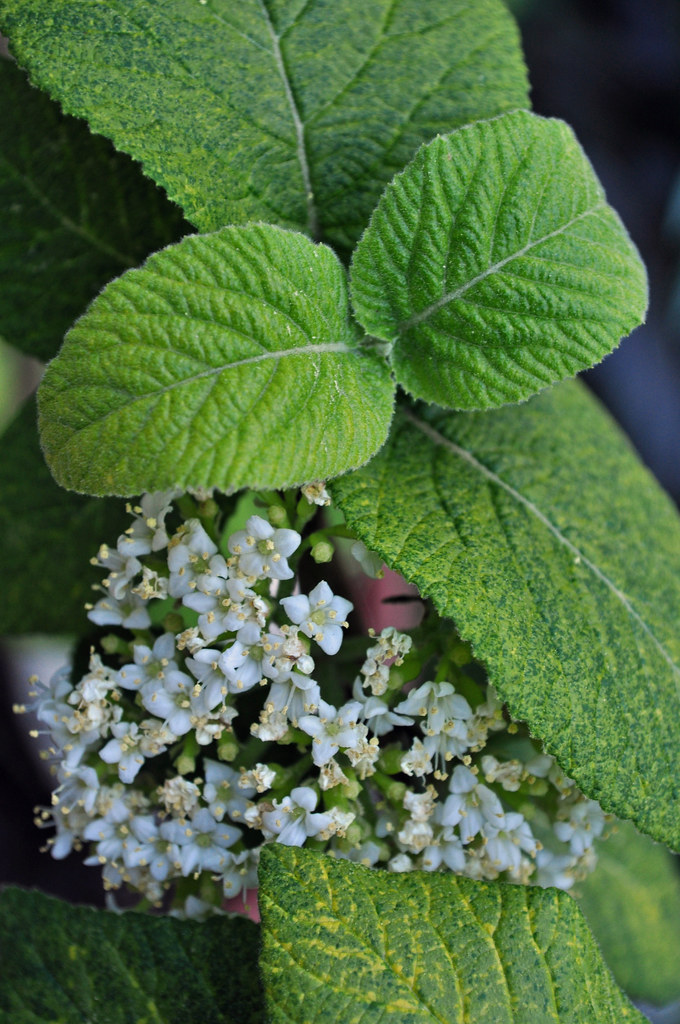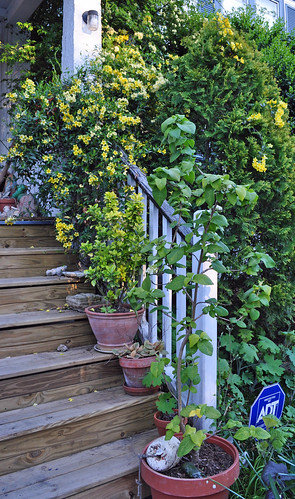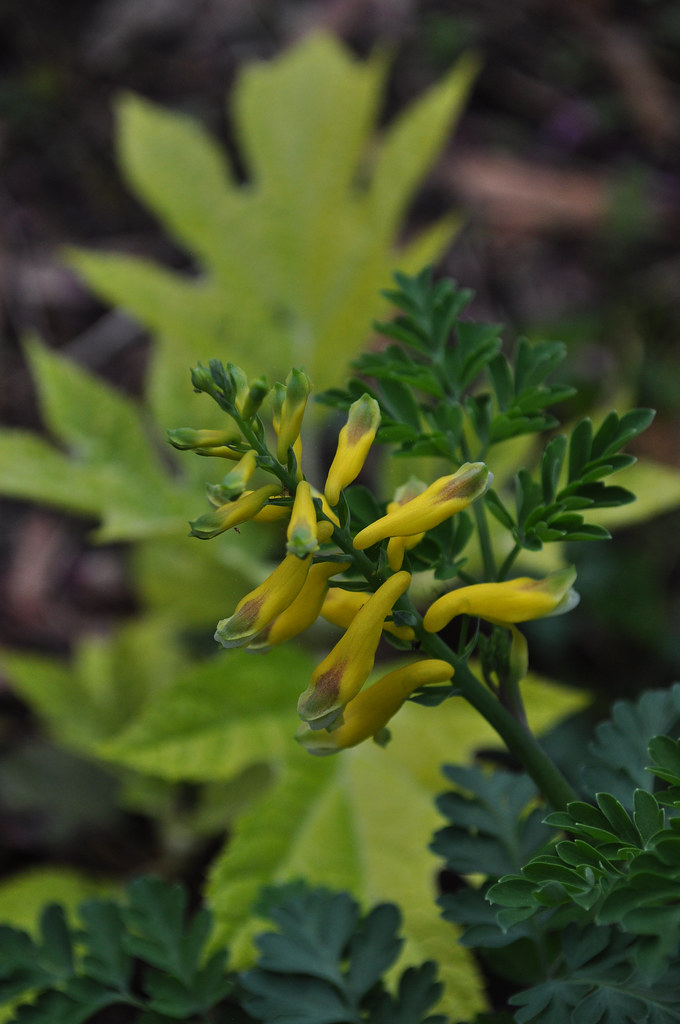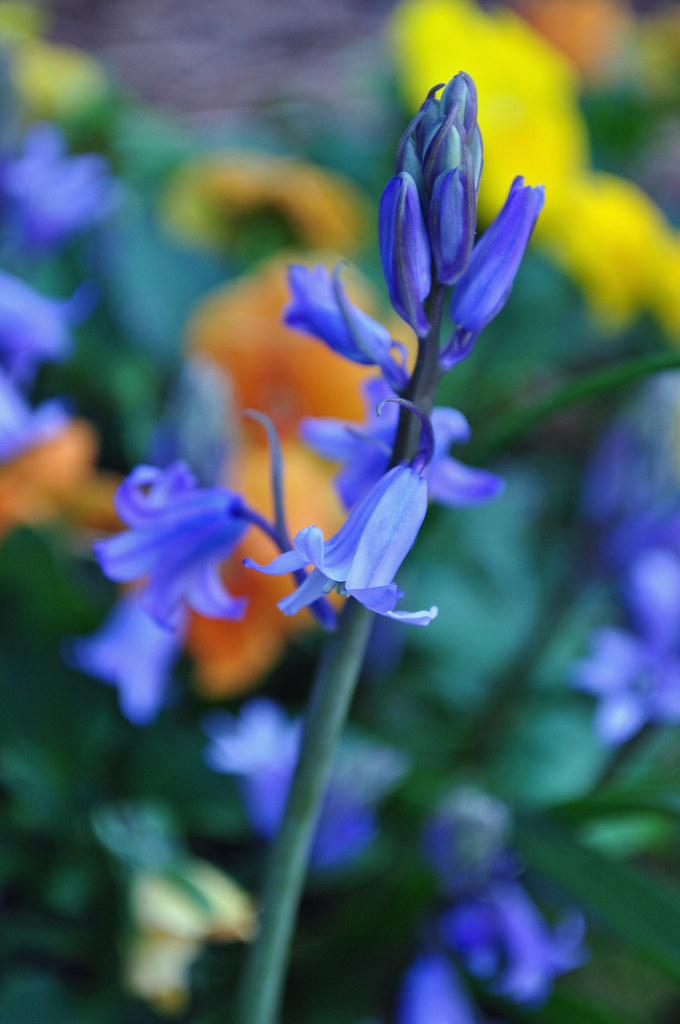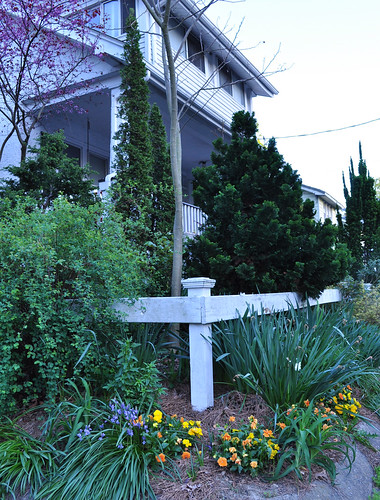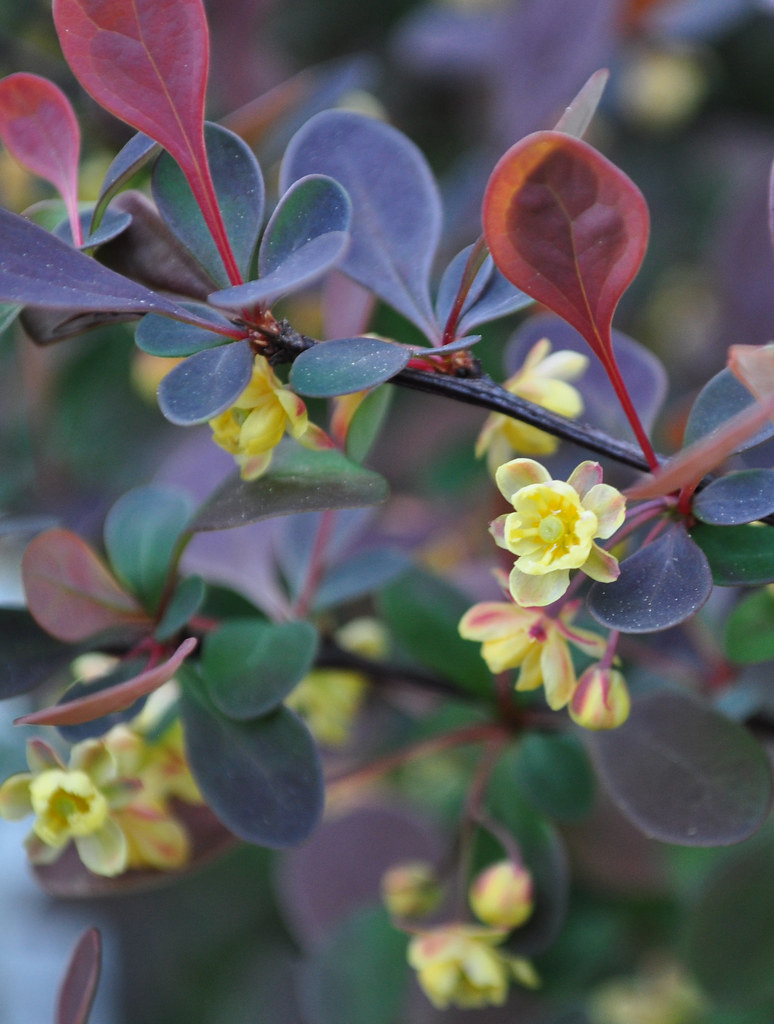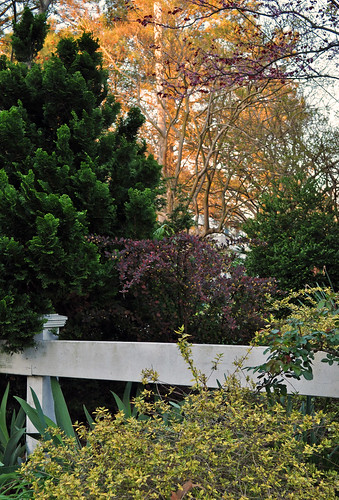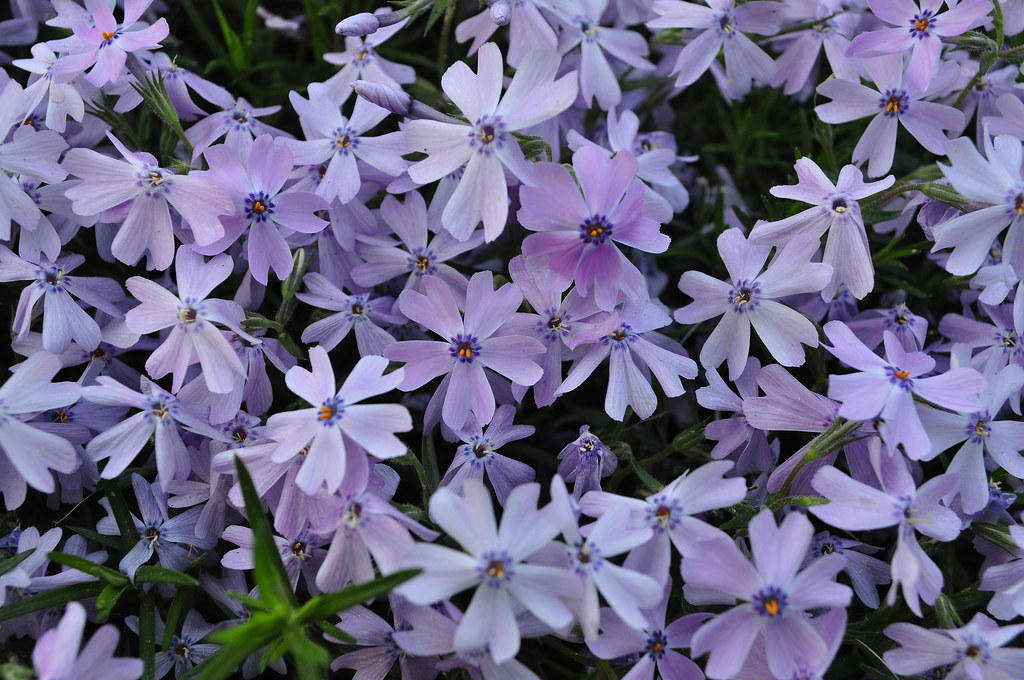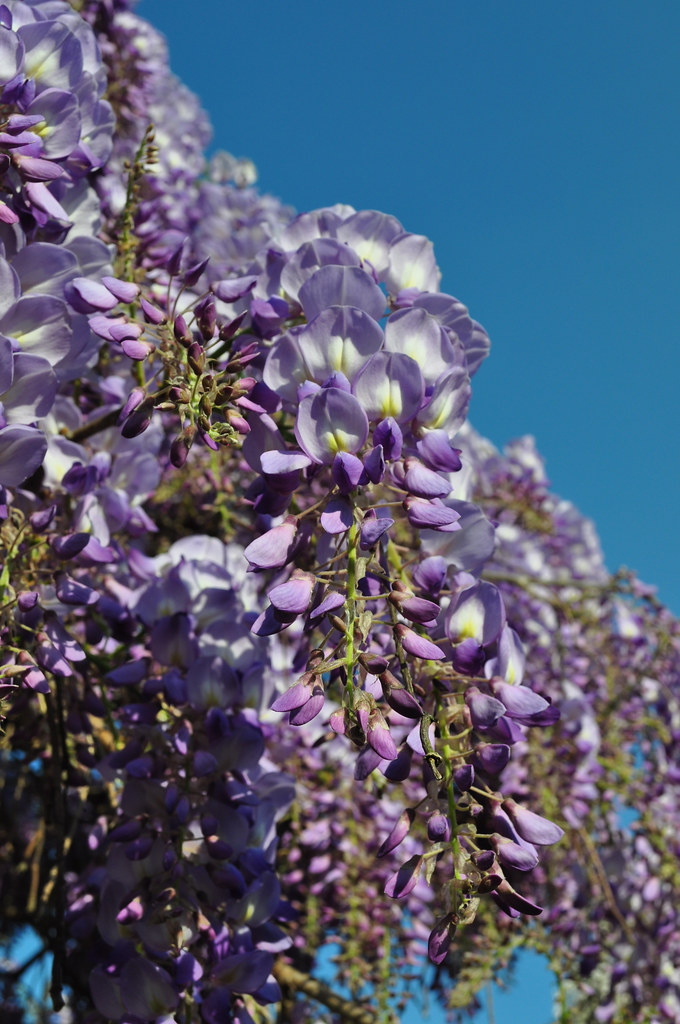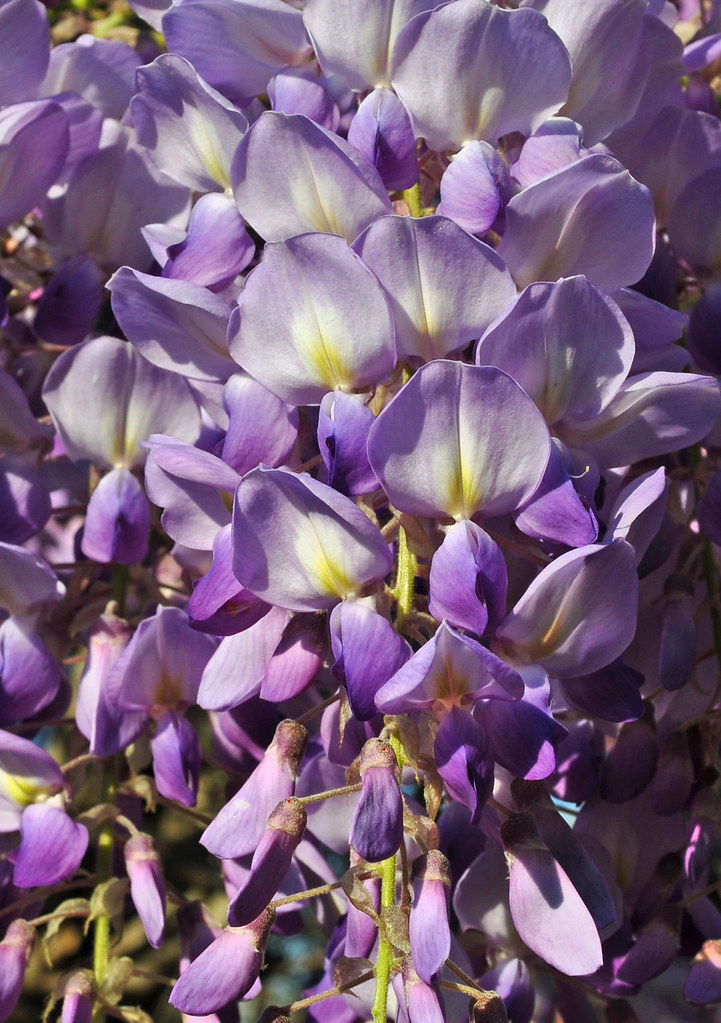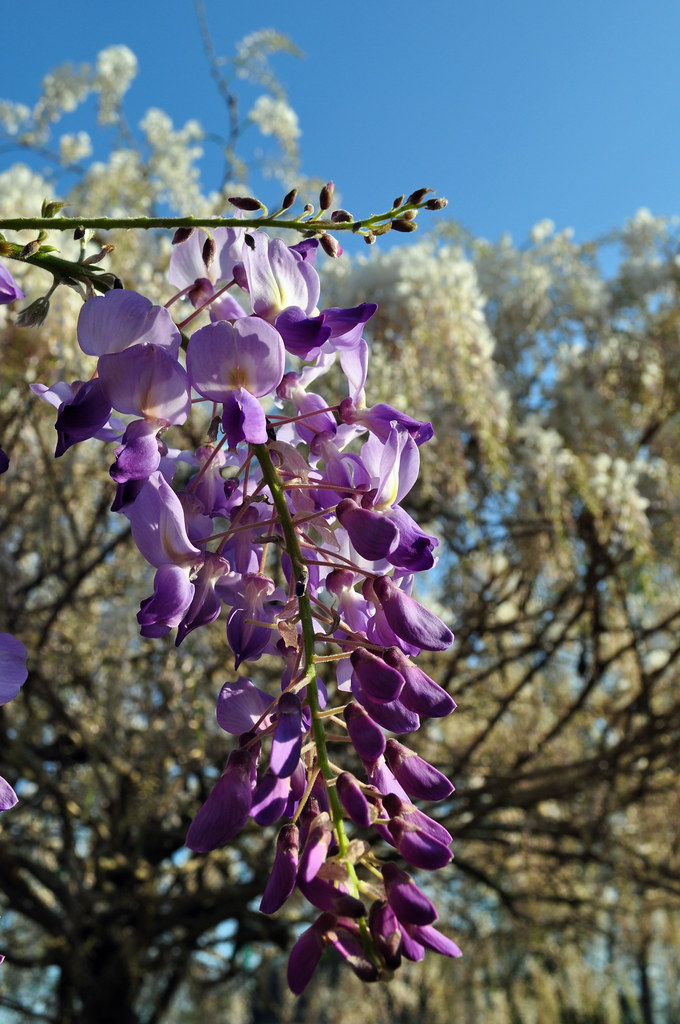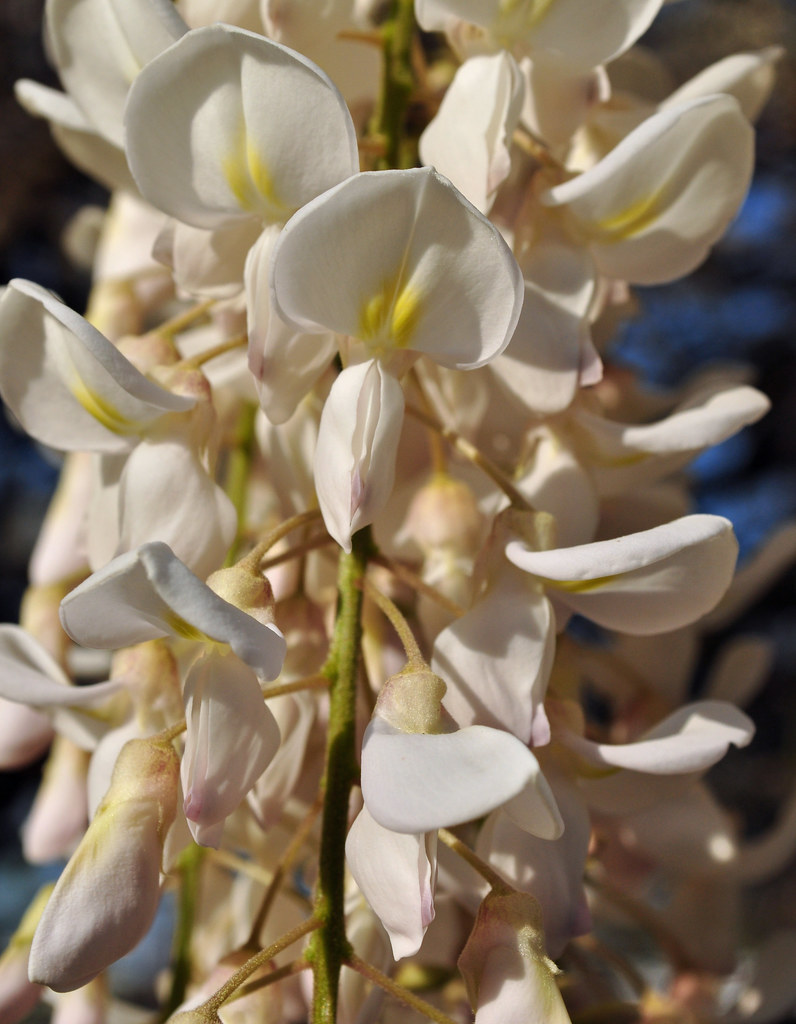This spring has been a spectacular one for Bearded Iris (Iris germanica) in my garden. I don't know if the prolonged cold we had this winter has anything to do with the number of blooms, or not, but I'll accept the increased numbers as partial compensation. These flowers have long been a favorite of mine, undemanding, except when in bloom, when they are very demanding of my attention.
If you want to know which cultivars these are, I am sorry but I dont know and am not sure I ever did. You have my permission to make up your own names.
More?
April 30, 2010
April 25, 2010
Azalea Trio
There are many parts of the country that are cloaked with Azaleas right now, and Hampton Roads in no exception. We are fortunate here to be warm enough to grow my favorite group, the Southern Indica Hybrids. These are large growing plants, often reaching 5-6', or higher further south. They also have large, showy, single flowers and large leaves. Their blowsy growth habit prevents them from responding well to severe pruning (not that some people don't try) which can be the fate of so many other Azaleas. I especially like to see when a trio of the fuschia 'Formosa', the white 'Mrs. G. G. Gerbing' and bi-color 'George Taber' are planted together.
Rhododendron x 'Formosa'
Rhododendron x 'Mrs G. G. Gerbing'
Rhododendron x 'George Taber'
Rhododendron x 'Formosa'
Rhododendron x 'Mrs G. G. Gerbing'
Rhododendron x 'George Taber'
April 22, 2010
Making Time For Church
For nearly a month now I have been putting in a six day, 60 hour work week. While I have had some time to enjoy my own garden, plus a few in town, I have not been able to get out into the natural world since my Back Bay outing in February. I need these trips to re-center myself, to clear my head and to take communion. In spite of an ever-growing laundry list of things I should have done today, I choose to head to the Zuni Pine Barrens west of here in Isle of Wight Co. The preserve is owned and managed by various interests including the Nature Conservancy, the Commonwealth of Virginia and Old Dominion University.
I have wanted to visit this place for a while, as it is one of only a few remaining patches of older growth Longleaf Pine (Pinus palustris). This tree once covered millions of acres from southeastern Virginia all the way down to east Texas, and it was vital to the settlement of the region. Without its wood and tar the shipbuilding industry would not have started here, and North Carolinians would need another nickname. Slow growing Longleaf Pines created their own ecosystems that relied on fire to germinate the tree's seedlings and to keep competition and undergrowth down, but once these forests were cleared and fire supressed, other more opportunistic trees took over. Despite its name, the Zuni Pine Barrens is home to a diverse community of plants and animals.
Vaccinim (some sort of Blueberry or Huckleberry)
Gaultheria procumbens (Creeping Wintergreen)
Iris verna (Dwarf Violet Iris)
Kalmia angustifolia (Sheep Laurel)
Crataegus (Some sort of Hawthorn)
The Blackwater River runs on the western edge of the Pine Barrens and is a true blackwater river. This type of waterway gets its name from the dark colored, but clear water that is high in tannins and acids, but low in nutrients. This is one of the few rivers in Virginia that does not empty into the Chesapeake. Rather it becomes the Chowan River in North Carolina before flowing into Albemarle Sound. On the shores of this flood-prone river grow stands of Bald Cypress (Taxodium distichum) and Swamp Tupelo (Nyssa sylvatica var. bifffora).
Rhododendron periclymenoides (I think this is Pinxterbloom Azalea)
I couldn't have asked for a more splendid house of worship in which to enjoy Earth Day services.
(complete picture set here)
I have wanted to visit this place for a while, as it is one of only a few remaining patches of older growth Longleaf Pine (Pinus palustris). This tree once covered millions of acres from southeastern Virginia all the way down to east Texas, and it was vital to the settlement of the region. Without its wood and tar the shipbuilding industry would not have started here, and North Carolinians would need another nickname. Slow growing Longleaf Pines created their own ecosystems that relied on fire to germinate the tree's seedlings and to keep competition and undergrowth down, but once these forests were cleared and fire supressed, other more opportunistic trees took over. Despite its name, the Zuni Pine Barrens is home to a diverse community of plants and animals.
Vaccinim (some sort of Blueberry or Huckleberry)
Gaultheria procumbens (Creeping Wintergreen)
Iris verna (Dwarf Violet Iris)
Kalmia angustifolia (Sheep Laurel)
Crataegus (Some sort of Hawthorn)
The Blackwater River runs on the western edge of the Pine Barrens and is a true blackwater river. This type of waterway gets its name from the dark colored, but clear water that is high in tannins and acids, but low in nutrients. This is one of the few rivers in Virginia that does not empty into the Chesapeake. Rather it becomes the Chowan River in North Carolina before flowing into Albemarle Sound. On the shores of this flood-prone river grow stands of Bald Cypress (Taxodium distichum) and Swamp Tupelo (Nyssa sylvatica var. bifffora).
Rhododendron periclymenoides (I think this is Pinxterbloom Azalea)
I couldn't have asked for a more splendid house of worship in which to enjoy Earth Day services.
(complete picture set here)
April 18, 2010
The Theme is Green
The theme of this month's Picture This Photo Contest from Gardening Gone Wild is Green World. Green of course is easy to find in the garden, but picking which picture to use was difficult for me. The first shot I considered is of emerging foliage from the Sun Goddess Hydrangea (Hydrandgea macrophylla 'Sun Goddess') growing in my garden. Some of my favorite shades of green are the yellow greens, acid greens and chartreuses; they have more warmth in them, plus they make many other colors pop.
The other photo I considered is of an Agave americana planted in the display garden at work. I have been sitting on this photo since this past winter. It was taken on a bright sunny day where the night's frost was quickly melted by the rising sun. Despite the warm sunlight, the bluer greens of the Agave are still cold to me.
I finally decided to use the following picture of Variegated Solomon's Seal (Polygonatum odoratum 'Variegatum' ) as my entry. It was taken last week in the back yard and while the hues are cool, they are not not as cold as the Agave. The color is more of a jade green, and I like the movement in the photo.
The other photo I considered is of an Agave americana planted in the display garden at work. I have been sitting on this photo since this past winter. It was taken on a bright sunny day where the night's frost was quickly melted by the rising sun. Despite the warm sunlight, the bluer greens of the Agave are still cold to me.
I finally decided to use the following picture of Variegated Solomon's Seal (Polygonatum odoratum 'Variegatum' ) as my entry. It was taken last week in the back yard and while the hues are cool, they are not not as cold as the Agave. The color is more of a jade green, and I like the movement in the photo.
April 15, 2010
Bloom Day - In Context
We are all familiar with the tools digital technology has given the photographer. It is now possible for nearly everyone with a camera and a computer to create beautiful images, especially of flowers, and I proudly embrace these tools. Macro settings, cropping tools and even digital erasures make it possible to hide undesirable elements. It is a shame these were not available when a good part of the world was ruled by politburos; it would have made the job of the official party photographer much easier as comrades and party operatives fell out of favor, defected or disappeared. Through current technology the garden photographer can hide the ugly pile of leaves, crop out the bug eaten petal, fade the stray street sign, or take dozens of pictures so that one will come out blog-worthy, all without spending a dime on film developing. The draw back to this is that you do not always always know in what setting the plant grows or get an accurate picture of the garden as a whole. So for this Bloom Day I thought I would show the pretty, cropped and edited photos and then the larger context in which they grow.
Our front porch is currently being devoured by the Lady Banks Rose (Rosa banksiae 'Lutea') and super sweet smelling Carolina Jessamine (Gelsemium sempervirens).
At the bottom of the steps I grow a Viburnum lantana 'Variegata' that I have kept in a pot now for over 10 years. The flowers are OK, but the foliage is fantastic with the bright green leaves touched with gold.
Here in context are the above three plants.
I grow two Loropetalums with this one being 'Pizazz' (Loropetalum chinensis var. rubrum 'Pizazz'). In context it is to the left of the front steps where it does not nearly have enough room to grow, so it gets pruned frequently.
My side garden is very shady and seems the perfect place to grow a couple of thugs: Common Violet (Violet papilionacea), Golden Creeping Jenny (Lysimachia nummularia 'Aurea') and the recently identified Corydalis heterocarpa (not C. lutea, thank you Denise).
At the sidewalk edge of the side garden I have been letting Spanish Bluebells (Hyacinthoides hispanica) naturalize, which they have done on their own, but I supplement with a few more bulbs each year.
Now here is a shot of the side garden as it becomes the front.
Before I knew about Loropetalum, I planted a Rose Glow Barberry (Berberis thunbergii 'Rose Glow'), mainly for the foliage, but the spring flowers are not ugly, especially in macro setting.
Here is the barberry in context behind some Sunrise Abelia (Abelia x grandiflora 'Sunrise').
Down by the curb is one of the few plants left over from the previous gardener, Creeping Pholx (Phlox subulata).
Here it is being kept in context by the monthly street sweeper.
Around back the Variegated Solomon's Seal (Polygonatum odoratum 'Variegatum' ) is planted between the water garden and an old stump I hauled on my shoulders half way down Cedar Island Beach.
If you would like to see what context other people garden in, or at least the context they blog in, visit Carol at May Dreams Gardens where she hosts Garden Bloggers Bloom Day every month. If you like her efforts, please let her know.
Our front porch is currently being devoured by the Lady Banks Rose (Rosa banksiae 'Lutea') and super sweet smelling Carolina Jessamine (Gelsemium sempervirens).
At the bottom of the steps I grow a Viburnum lantana 'Variegata' that I have kept in a pot now for over 10 years. The flowers are OK, but the foliage is fantastic with the bright green leaves touched with gold.
Here in context are the above three plants.
I grow two Loropetalums with this one being 'Pizazz' (Loropetalum chinensis var. rubrum 'Pizazz'). In context it is to the left of the front steps where it does not nearly have enough room to grow, so it gets pruned frequently.
My side garden is very shady and seems the perfect place to grow a couple of thugs: Common Violet (Violet papilionacea), Golden Creeping Jenny (Lysimachia nummularia 'Aurea') and the recently identified Corydalis heterocarpa (not C. lutea, thank you Denise).
At the sidewalk edge of the side garden I have been letting Spanish Bluebells (Hyacinthoides hispanica) naturalize, which they have done on their own, but I supplement with a few more bulbs each year.
Now here is a shot of the side garden as it becomes the front.
Before I knew about Loropetalum, I planted a Rose Glow Barberry (Berberis thunbergii 'Rose Glow'), mainly for the foliage, but the spring flowers are not ugly, especially in macro setting.
Here is the barberry in context behind some Sunrise Abelia (Abelia x grandiflora 'Sunrise').
Down by the curb is one of the few plants left over from the previous gardener, Creeping Pholx (Phlox subulata).
Here it is being kept in context by the monthly street sweeper.
Around back the Variegated Solomon's Seal (Polygonatum odoratum 'Variegatum' ) is planted between the water garden and an old stump I hauled on my shoulders half way down Cedar Island Beach.
If you would like to see what context other people garden in, or at least the context they blog in, visit Carol at May Dreams Gardens where she hosts Garden Bloggers Bloom Day every month. If you like her efforts, please let her know.
April 8, 2010
The Purple Curtain
Right now many parts of this area are cloaked in a purple curtain of Wisteria. It has naturalized to the point that many people think of it as native. What most people are seeing is Wisteria sinensis (Chinese Wisteria) that has escaped cultivation. There are several truly native Wisterias, W. frutescens and W. macrostachya. Although vigourous, these native varieties are much better behaved than W. sinensis and the other common Asian species W. floribunda (Japanese Wisteria). Despite their behaviour issues, we sell the Asian species at work because these are what people think of as traditional, but we sell the W. frutescens as well. Years ago several Japanese Wisterias were planted at the garden center onto steel poles and trained as trees, and right now they are stunning, their sweet scent nearly cloying. If you are in the market, you should know that it can sometimes take the Chinese up to 7 years to bloom, but the more expensive Japanese blooms at a younger age. The American species will bloom a little later, a little less showy, but will tend to re-bloom lightly and occasionally through the summer.
Wisteria floribunda 'Texas Purple'
Wisteria floribunda 'Issai'
Even plants ignore speed limits.
Wisteria floribunda 'Texas Purple'
Wisteria floribunda 'Issai'
Even plants ignore speed limits.
Subscribe to:
Posts (Atom)
